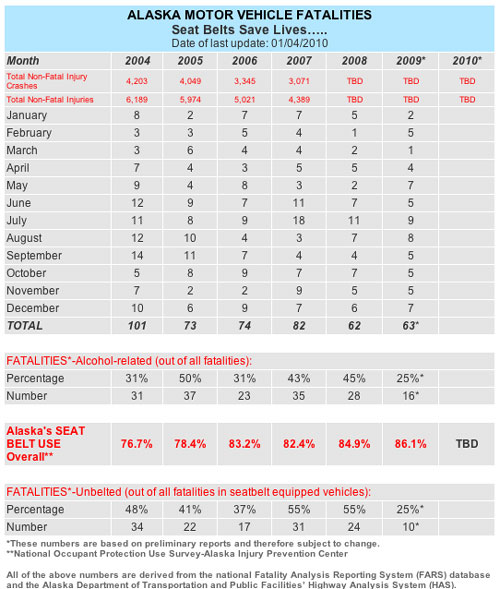 By ZACK McMILLIN Scripps Howard News Service January 04, 2010
Some advocates call it America's great, unnoticed public health menace, and it can hit any household in any neighborhood, inner city or suburban, rich or poor, black or white. It is the leading cause of deaths among Americans ages 1 to 34, and is the leading cause of long-term disability for all. Many Americans fear becoming a victim of crime, but statistics show we are far more likely to be seriously injured or killed in a vehicle accident than to be harmed at the hands of criminal attackers. And yet today and tomorrow and the next day, parents will subject themselves and their children to its danger with little concern. "People don't generally think of driving as a risky task," says Russ Rader, of the Insurance Institute for Highway Safety. "They think that crashes happen to other people, not themselves. There is a researcher who calls it the illusory zone of immunity -- when we do things day after day that are routine, we don't think of them as being particularly dangerous. "But of course the statistics show that getting behind the wheel of a car is probably the riskiest thing any of us do on any given day." Nationwide, an average of more than 41,000 have died in accidents each year over the past decade. And yet, the deadly consequences of car crashes rarely lead TV newscasts or make it onto the front of the local news section of newspapers. As the blogger Matthew Yglesias pointed out after a commuter train accident in Washington killed seven people and made national news: "One story you're not going to see leading tomorrow's newspaper is '97 dead in fatal car accidents.' " That, the blogger computed, was the number of people killed every day on America's roads, although the Institute for Transportation Engineers estimates 120 people die every day from what it calls "vehicle-related crashes." That's like having four major airline disasters happen every week, the institute points out. At the AAA Foundation Web site, chief executive officer Peter Kissinger repeatedly calls the epidemic of vehicle-related accidents a "public health crisis." One Kissinger quote from a 2007 press release is typical of the message AAA is trying to spread: "Someone dies in a highway crash every 13 minutes. Where is the outrage? Why does our society accept so many deaths at the price of mobility? Traffic crashes are the leading cause of death for Americans from ages 1 to 34, and they affect countless friends and family members whenever they occur. Yet, motorists, citizens, key stakeholders and our society in general, are complacent to these ongoing tragedies." Advocates stress that while some fatal accidents are tragically unavoidable, there are factors that can increase or reduce risk. Memphis personal-injury lawyer James Ferrell offers five tips:
SitNews Editor's Note: Infortmation provided by the Alaska Department of Safety reports the number of vehicle fatalities in Alaska. The Alaska Department of Safety notes on their website that crash staff in the Highway Database Section are responsible for providing a database of reported motor vehicle traffic crashes that occurred on public roads. Motor vehicle crash information is first recorded on an accident report form by the Alaska State Troopers, local police officers, or the accident participants. Law enforcement agencies and participants forward the reports to Driver Services, Division of Motor Vehicles (DMV), Alaska Department of Administration. DMV forwards a copy of each accident report to ADOT&PF's Division of Program Development, Highway Database Section. "Alaska Traffic Crashes"
Annual Publications can be located at The following chart is courtesy
of the Alaska Department of Safety.  Scripps Howard News Service, http://www.scrippsnews.com Publish A Letter in SitNews Read Letters/Opinions
|
||